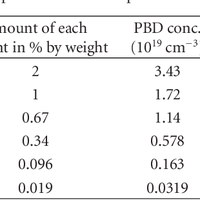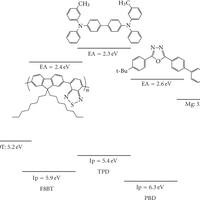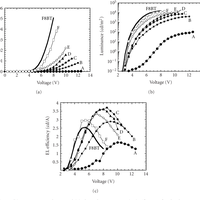Abstract
The efficiency of light-emitting diodes (LEDs) based on poly[(9,9-dioctylfluorenyl-2,7-diyl)-alt-1,4-benzo- { 2, 1 ′ -3 } -thiadiazole)], F8BT, is optimized upon simultaneous doping with a hole and an electron trapping molecule, namely, N, N ′ -Bis(3-methylphenyl)-N, N ′ -diphenylbenzidine and 2-(4-biphenylyl)-5-(4-tert-butylphenyl)-1,3,4- oxadiazole, respectively. It is shown that, for devices with poly(3,4-ethylene dioxythiophene) doped with polystyrene sulfonic acid as hole-injection layer material and magnesium cathodes, the efficiency is nearly doubled (from ca. 2.5 to 3.7cd/A) upon doping with ca. 0.34 by weight of both compounds. © 2009 2009 Luis Morgado et al.
Figures
Register to see more suggestions
Mendeley helps you to discover research relevant for your work.
Cite
CITATION STYLE
Morgado, J., Morgado, L., & Alcácer, L. (2009). Polymer light-emitting diodes efficiency dependence on bipolar charge traps concentration. Research Letters in Materials Science, 2009. https://doi.org/10.1155/2009/503042




